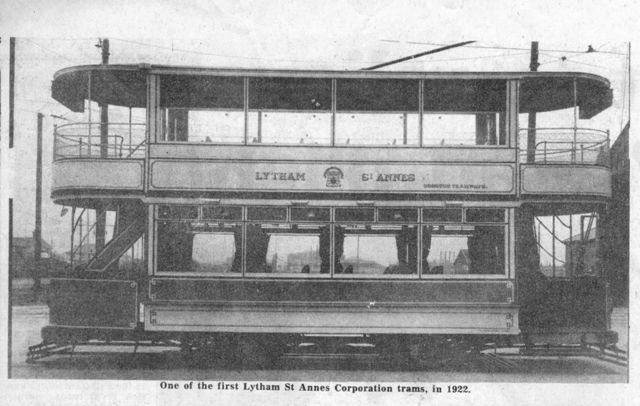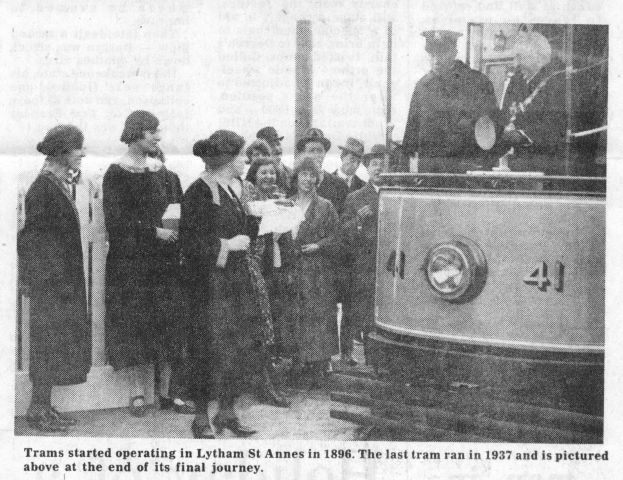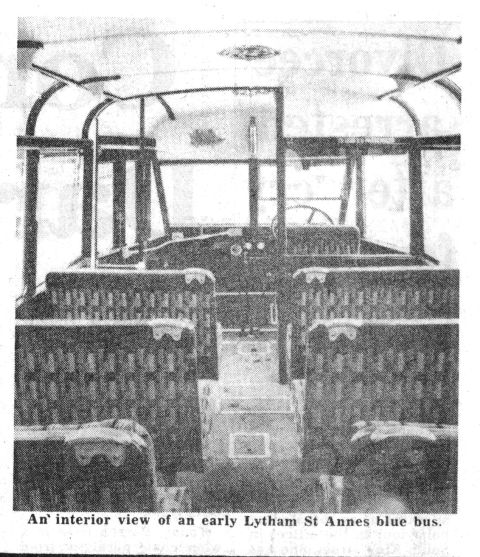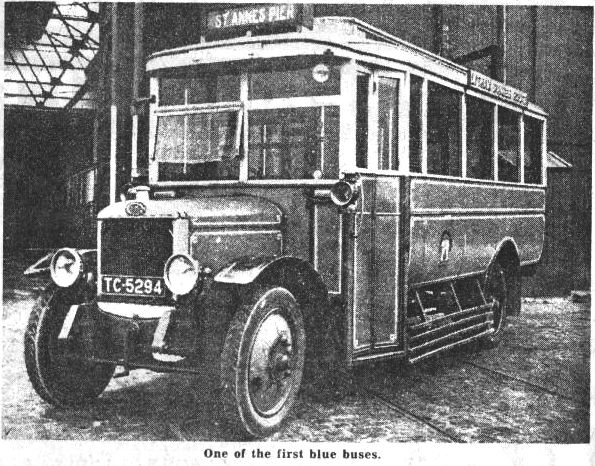The history of bus services in Lytham &
St.Annes
Evening Gazette, August 10th, 1983

THE corporation bus service in South Fylde has just
celebrated its diamond jubilee. LINDA TANNER looks back over 60 years, down a
road that has not always been a smooth one, and examines what the future might
hold for the blue bus operation under its new young manager and with the support
of subsidies from Lancashire County Council.
CORPORATION BUS SERVICE SET FOR A SMOOTHER RIDE

THE first blue bus ran in Lytham St Annes on August 6, 1923. The
independent corporation service had a bumpy route down the following 60 years.
It was said to be on the road to ruin on many occasions.But, each time, it
turned the corner and last weekend it celebrated the diamond jubilee of the
buses.
As 1983 is also the centenary of municipal transport, Fylde
Council marked the double date with a Victorian Fares Day. Anyone who on
Saturday tendered a coin bearing the head of Queen Victoria was able to travel
anywhere in Fylde on a blue bus. They also received an original Lytham and
Blackpool Tramways ticket.
Of course, the Victorian fares scheme meant that passengers
could ride on a bus from Lytham to St Annes for as little as one old — very old
— penny. That is one quarter of the fare when the service was introduced in 1923
— and 1/124th of the cost today.
 It was a year after Lytham
and St Annes merged in 1922 that the new corporation was permitted to operate
buses. The service began with two omnibuses supplied by the Guy Motor Company
at a cost of around £1,000 each. The buses had pneumatic tyres, open windows
and a roof extension and accommodation for 20 passengers on seats of brown,
grained leather. It was a year after Lytham
and St Annes merged in 1922 that the new corporation was permitted to operate
buses. The service began with two omnibuses supplied by the Guy Motor Company
at a cost of around £1,000 each. The buses had pneumatic tyres, open windows
and a roof extension and accommodation for 20 passengers on seats of brown,
grained leather.
The "St Annes Express" of August 10, 1923, reported, "The
inauguration of a municipal motor bus service between St Annes and Lytham
promises to be a public boon and a blessing to the people of the east and
Commonside . .
"Residents along the route between Church Road and Lytham who
'are a long way from nowhere' find the buses a great convenience in visiting
either St Annes or Lytham and we hear of invalids who have hitherto taken their
exercise round about their homes who are reviving their acquaintance with the
promenade .. .
"The service began last Saturday and Mr H. W. Laing who has the
buses under his tramways wing is well pleased with the reception the easy
running vehicles have received."
The newspaper questioned whether passengers would be willing to
pay the 4d fare from Lytham to St Annes. But it seems that they were. The number
of buses was soon increased to six and they carried 416,400 passengers and
travelled 80,700 miles during the first year. The running costs in 1923 were
8.89d a mile.
Nowadays a new bus costs £65,000 and operating expenses are
119.4p a mile. Fylde Transport, which took over the blue buses from the old
Lytham St Annes Corporation at local Government re-organisation in 1974,
currently has 31 buses. Nineteen of these are double-deckers and 12 are
single-deckers and in 1981 they travelled a total of 900,000 miles.

But some things do not change. An early report reveals that when
fares were reduced from 4d to 3d as an experiment in 1923 the buses lost money.
And that was exactly the reason why Fylde councillors recently decided against a
similar fare- cutting proposal. Another parallel also emerges from the history
of the blue buses.
In the early 1930s, the buses and trams were losing money and
there was a strong takeover bid from Blackpool. But the late Councillor "Little
Johnnie" Horsfall finally persuaded the corporation to vote by a narrow majority
to keep the independent transport service. This pattern was repeated last year
when ex-councillor John Gouldbourn led a fightback which resulted in the council
decidding by a one-vote margin to reject a takeover by Blackpool.
However, there have been some downhill runs as well as uphill
struggles in the blue buses' journey through six decades. In the 1940s and
1950s, the service actually made a profit and was able to give £31,000 towards
rate relief. At that time, its fares were among the lowest in the country.
And now, under its young manager, Mr Ian Marsh, the blue bus
operation has reduced its losses and obtained subsidies from Lancashire County
Council. So the road ahead seems a little smoother .. .
|